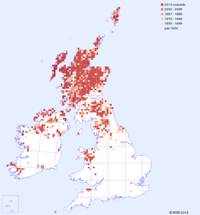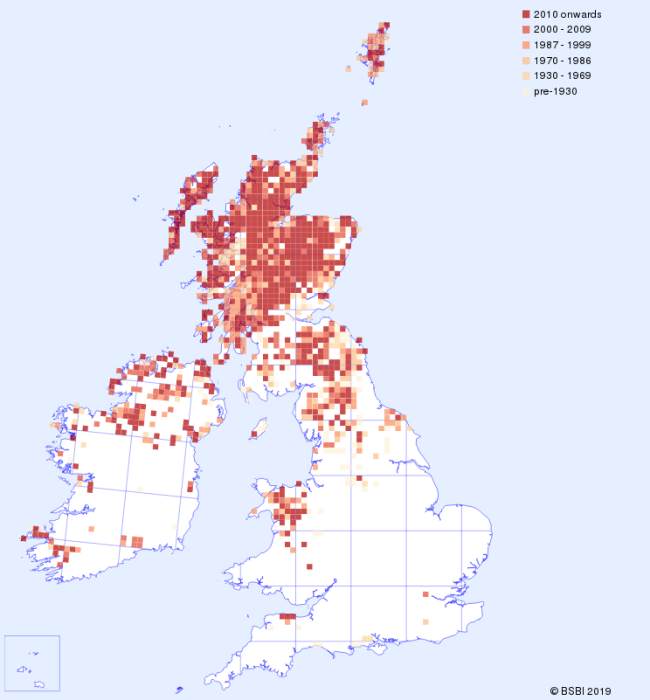Although very difficult to find, once uncovered this tiny orchid with its distinctive shiny brown flowers and pair of opposite-facing heart-shaped leaves cannot be confused with any other species. Its range is mainly restricted to the northerly parts of Britain and Ireland with only one or two sites in the south, including Ceredigion in Wales and on Exmoor in Devon and Somerset. Lesser Twayblade occurs in two distinct habitats that share a common condition: shady, moist ground. On wet moorland and peat bogs it nestles under straggly heather and bilberry bushes, often growing on mosses - particularly sphagnum moss. In shady woodlands these orchids grow on moss under heathers and bracken. The peak flowering time is from mid-May until mid-July, but it can sometimes appear as early as the end of April. Close examination of the plant reveals delightful tiny star-shaped flowers, but persistance is required to find them. Where one plant is discovered there are often others very close by; however, they may not be flowering, which makes spotting them even trickier. In Europe Lesser Twayblade occurs from Scandinavia, Iceland and Greenland in the north to as far south as northern Italy and Greece.
| Distribution Map | Key Features | |
 |
Records for the Lesser Twayblade from BSBI are shown on the map with most recent in front. (Hover the mouse over the small map to expand it.) |
Plant: 3 to 25cm in height, but usually 10 to 15cm - taller in shaded woodland; stem green or reddish-purple and ridged towards the tip. |
Image Gallery for Lesser Twayblade Neottia cordata
| Pollination | Taxonomy & Hybrids |
Pollination is carried out by a variety of small flies and gnats, which are apparently attracted by the unpleasant-smelling (to us) nectar secreted by the plant. |
The specific name cordata means 'heart-shaped'. |
Articles about Lesser Twayblade in JHOS
